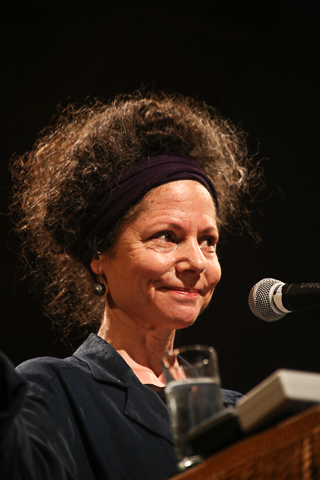A protocol for ensuring safer infrastructure
by Katie Singer
In Santa Rosa, California, a cell site was installed on the utility pole without neighborhood notification in January, 2018.
Photo credit: https://mystreetmychoice.com
In the Fall of 2018, my City Council held a public hearing before it voted on an ordinance that would effectively allow telecom corporations to install cellular antennas (i.e., 5G small cell sites) on public rights-of-way as they deem fit. Before the vote, about 30 citizens spoke. Most people opposed the ordinance, referencing scientific studies that show that legally allowed levels of electromagnetic radiation (EMR) emitted by antennas on utility poles close to residences would likely harm public health and wildlife.
The councilors largely ignored these comments. In 1996, perhaps because the telecom industry aimed to deploy infrastructure for mobile networks no-matter-what, the U.S. Congress passed the Telecommunications Act (TCA); its Section 704 states that a municipality cannot deny a permit to install new telecom equipment "on the basis of the environmental effects of radio frequency (RF) emissions" if the Federal Communications Commission's RF limits are met. (Similar laws were enacted internationally.) In legal challenges to Section 704, several U.S. Circuit Courts interpreted the word "environmental" to include health. The TCA also states that if it is believed that a municipality denies a telecom permit based on environmental (or health) concerns, then the telecom company can sue that city.
Indeed, the TCA's Section 704 puts municipal leaderswho likely do not want their city sued by a telecom corporationin a bind.
About a year before my city council's meeting, I had begun to learn about electrical equipment's fire hazards. During my two minutes at the podium, I noted that our city had endured unusually high winds the previous spring. "Will a professional engineer evaluate each utility pole and certify that it can safely hold hundreds of pounds of electronic gear, including in high winds?" I asked. "Will a professional engineer certify that each cell site's fire and collapse hazards have been mitigated? Also, in the event that a cell site on a public right-of-way does collapse and/or catch fire, who will be liablethe telecom corporation, the municipality or the property owner?"
A man who spoke after mewho supported 5G's deploymentreferred to my questions and nearly shouted, "Come on! Cellular sites are not new technology!"
When the citizen-comment period ended, our city attorney went to the podium. "Councilors," he said. "In regard to Ms. Singer's questions, we trust the telecom companies."
The ordinance passed.
I began collecting photos about cell towers that have collapsed and caught fire.1 I also wondered what I could have done differently to help my city enact a safer telecom ordinance.
Who decides?
When corporations want to deploy 5G and market billions of new devices to go with it, who decides whether or not the new technology is safe?
What qualifies the experts who make decisions? Do they prioritize wildlife and public healthor corporate profit and technological developments? Do deciders look at the technology's impacts from its cradle-to-grave? Do they look from its cradle-to-7th generation?
What do the experts' evaluations entail? Do they provide forums to hear and research citizens' questions about 5G's safety and ecological impacts? Do they hold licenses? Do they hold liability for their reports?
Defining "experts"
(Note: You can view every article as one long page if you sign up as an Advocate Member, or higher).





